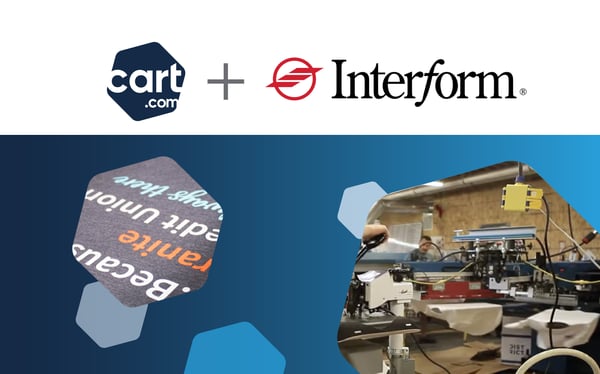Brands navigating today's warehousing and fulfillment face evolving demands that challenge their operations. Speed, accuracy and adaptability are no longer luxuries – they are essential for companies looking to stay competitive and meet consumer expectations.
Upgrading your warehouse management system software (WMS) can offer a substantial advantage, enabling warehouses to keep pace with industry standards and customer expectations while also offering robust order visibility.
As ecommerce growth continues to surge, efficient and scalable warehouse system solutions will become the backbone of the modern supply chain, helping businesses fulfill orders precisely and quickly. Without a modern WMS, businesses will slowly experience more frequent errors and an overall cumbersome warehouse process.
For organizations looking to upgrade their current warehouse management system software, the following sections will help identify important features when comparing potential solutions.
What is the role of a warehouse management system
A Warehouse management system plays a central role in a company's supply chain by managing and optimizing various warehouse functions. Typically, the platform acts as the command center, tracking inventory accurately while reducing operational headaches and minimizing costs.
A well-functioning WMS ensures that each process stage – purchasing, storage, order fulfillment and distribution – is handled correctly in an interconnected supply chain. While a WMS is great at simply managing inventory, it also has the added benefit of supporting a streamlined supply chain in the following ways:
- Centralized inventory control
- Streamlined order processing
- Enhanced collaboration
- Agility and flexibility
- Visibility
Why a warehouse management system upgrade is critical
Sticking with outdated WMS solutions can create operational bottlenecks and reduce a warehouse's ability to adapt to market demands. With limited integration capabilities, using these older systems often leads to data silos, making it challenging to gain a complete, real-time view of inventory and overall operations.
Warehousing trends are highly influenced by the sustained growth of ecommerce and increasing customer expectations for rapid delivery. Since older systems cannot scale and integrate seamlessly with other essential platforms, many organizations want to upgrade their current WMS. However, with countless options available, it's important to consider your organization's growth plans when selecting new warehouse management system software.
Benefits of upgrading to new warehouse management system software
Upgrading your WMS offers several advantages that go beyond basic warehousing tasks. For instance, a modern system can help streamline processes with automation, predictive analytics and improved data transparency. A robust warehouse management system can also transform your operations through:
- Increased inventory accuracy
- Faster order fulfillment
- Improved labor productivity
- Better data insights and reporting
- Seamless integration with other systems
- Greater scalability and flexibility
- Compatibility with warehouse automation
- Enhanced security and compliance
What features should you look for when upgrading to a new warehouse management system?
When choosing new WMS software, looking for features that will future-proof your warehouse and allow for quick adoption as the market changes is important. A powerful system should support your growth while maximizing efficiency.
The following five features should be on top of the list as your team compares potential solutions.
1. Real-time inventory visibility and tracking
Real-time inventory visibility is foundational to efficient warehouse operations. Instant access to inventory data enables precise tracking of stock levels, reducing the risk of stockouts or overstocking.
WMS tools like RFID and barcode scanning make it possible to track every item, significantly cutting down on discrepancies and boosting accuracy. This additional precision means warehouse staff can quickly locate products, reducing pick times and minimizing order processing delays.
With automated alerts for low stock levels or slow-moving inventory, businesses can proactively manage their supply chain, ensuring resources are used efficiently and meeting customer expectations.
2. Seamless integration capabilities
A seamless integration ensures that your WMS communicates effectively with internal systems, reducing the need for manual data entry and reducing human error risk. For example, connecting inventory management with sales and accounting systems can provide a unified view of operations while streamlining workflows from receiving goods to final delivery.
One of the biggest advantages of an easily integrated solution is real-time updates. Based on demand fluctuations, team members can immediately adjust orders, shipping schedules and stock levels.
3. Labor management tools to track productivity
Labor management tools in WMS software go beyond simple task allocation by providing real-time data on workforce performance. The additional insights help managers optimize productivity and realign effective labor allocation. Most advanced labor tools include productivity tracking and performance metrics, creating a clear view of individual and team performance. With the new features, managers can track KPIs such as pick rates, packing times and order fulfillment rates, making identifying and addressing bottlenecks easier.
4. Scalability and flexibility while growing
A successful WMS solution must support your business growth through scalability and flexibility. As your organization expands, adding new warehouses or handling increased order volumes, you need a platform that will grow with you. One of the best options is to look for modular WMS systems.
These solutions are designed to grow with you, allowing your team to add new features or support multiple locations without requiring a complete overhaul.
5. Customizable Reporting & Analytics
Customizable reporting capabilities are crucial for companies looking to make better choices based on clear, actionable data. A robust WMS should offer customizable reporting options that allow you to track company-specific KPIs and adjust warehouse operations accordingly.
Customizable dashboards are another key feature of advanced warehouse management systems, providing a clear overview of inventory levels, fulfillment times, labor productivity and more. Along with customization, many advanced solutions offer predictive analytics to help forecast demand based on historical data and market trends.
Upgrade your warehouse management system software with Cart.com
Upgrading to a modern WMS can be transformative, helping your organization streamline operations and meet the demands of today's supply chain. As a partner of Cart.com, businesses have full access to our Constellation WMS to help power day-to-day warehouse operations through our 3PL warehouse services or as a standalone investment.
Cart.com combines best-in-class WMS software with a team of experienced supply chain professionals to help organizations enhance their warehouse efficiency. Contact our team today to learn how we can help your company expand operations through Constellation WMS.
Subscribe to our emails for the latest industry insights!
By entering your email, you agree to receive marketing emails from Cart.com




.png?width=1940&height=180&name=better%20software%20(1).png)



